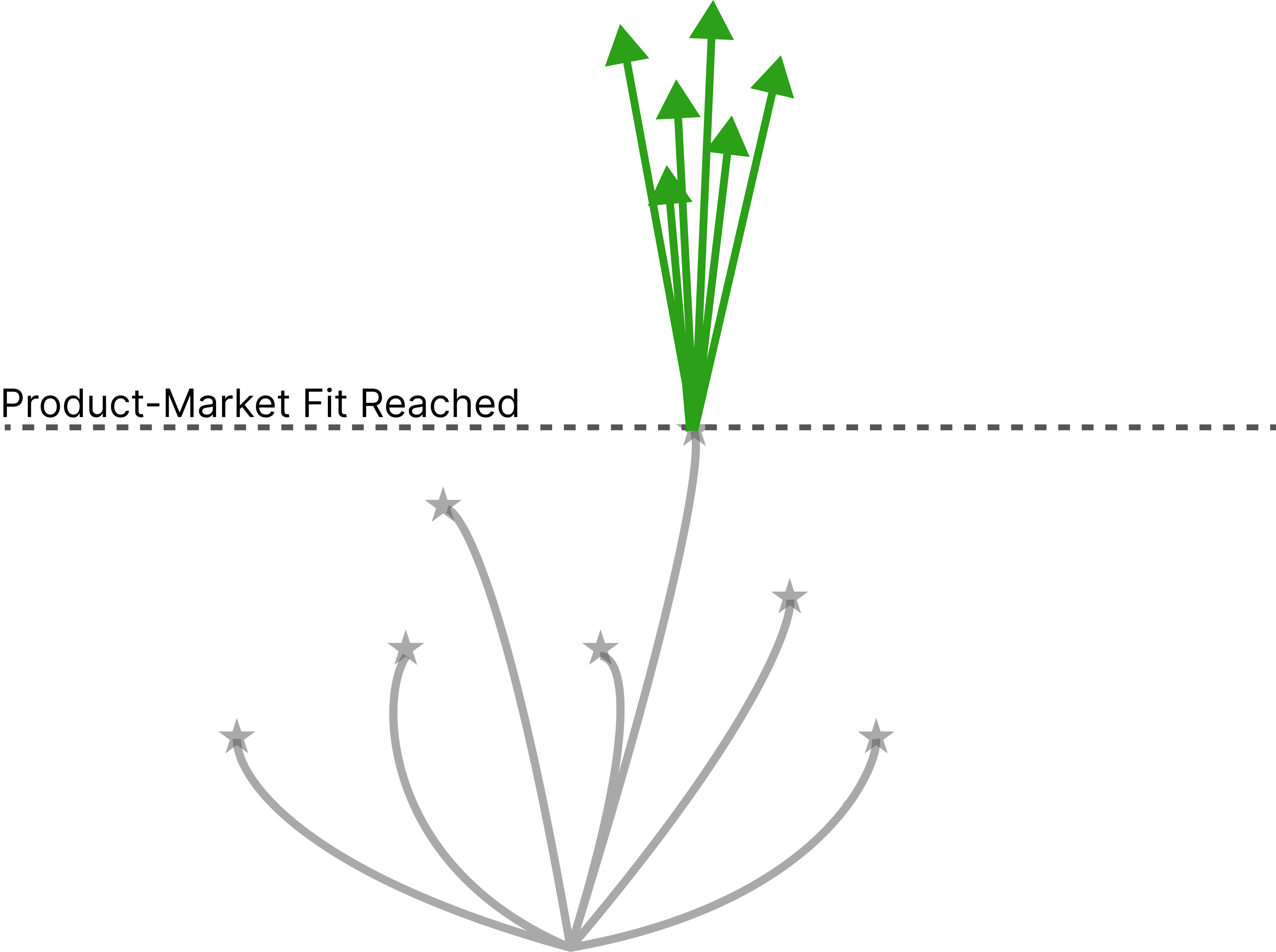In the most simplistic view, there are only two phases in the history of a startup’s life: Before product-market fit, and after product-market fit (PMF). The transition between the two is intense and fundamentally reshapes the experience of working at a startup.
Product-market fit is the point at which everything starts to work for a startup – the point when there is a market that is excited to buy what you’re offering to it (the product). Before PMF you definitionally are not a viable business: Product-market fit is necessary but not sufficient for success.
If you’ve been fortunate enough to see a company find true product-market fit up close, you often get a lot of questions from startup folks who are on the journey themselves. So let’s dive into what product-market fit is and isn’t, and what to do when you’ve found it.
What Product-Market Fit Is and Isn’t
Finding product-market fit is sort of like a scene towards the start of the movie The Matrix. The protagonist Neo is awakened from the computer simulation that he’s been living in, only to find himself naked and disoriented in a vat of liquid. Just moments ago, he was a successful software engineer with a mild existential crisis. Suddenly he wakes up in the “real world” naked and covered in goo, and needs to immediately fight to survive.
 A minute later, he’s unceremoniously flushed down a toilet
A minute later, he’s unceremoniously flushed down a toilet
Product-market fit marks the point where a meaningful proportion of a coherent market (Tech HR teams; SEO marketers; transportation industry CFOs) will be willing to pay for your product. This occurs when and only when you are solving an important problem better than customers can solve it today – meaningfully better, cheaper, faster, anything.
The days before product-market fit are a simple time. You don’t truly know who your product’s customers will actually be, nor how they’ll actually find value from it. The hallmarks of a lack of PMF are infrequent, useless customer feedback (when you aren’t solving an important problem, nobody has meaningful asks) and lack of usage (you might be onto a real problem, but you can’t credibly solve it). At this point you might have a product, and even an identified market, but no fit.
But a lesser known fact about startups is that pre-PMF is usually a very happy time, if you can shake the existential dread that not finding it means you’ll be out of a job. Since you can theoretically become anything before product-market fit, the world is bright. Every exciting potential future is still on the table, and you also have no responsibilities because nobody is relying upon your product. You can only stress about your runway so much, and critically pressure is always lower when your ego isn’t (yet) intertwined with success. Pre-PMF products are perpetually second-semester high school seniors, full of promise and without a care in the world.
The world after product-market fit is completely different. The start of product-market fit is truly marked by the moment when your market is only just barely willing to make a purchase. Since customers are now depending upon your barely-viable product and paying you to solve an important problem, the hallmark of achieving product-market fit is actually urgent feature requests, scaling problems, and a line of suddenly demanding customers leading out the door.
When you hit PMF you transform overnight from a graduating high schooler to a single mom with 2 kids and rent due next month. You have a backlog of 100 product requests that seem like good ideas, and the bandwidth to build maybe 15 of them in the next quarter. This wouldn’t necessarily be a problem, except that the list is growing by 10 requests per week. And so begins the great journey.
What To Do With Your Product-Market Fit
Product-market fit pulls back the veil hiding what your startup will actually do, and as a result is the most powerful focusing moment in the life of a company. Before product/market fit you can do anything, but your exploration is broad and unfocused, leading to many aborted ideas and adventures down rabbit holes:

Once you’ve found product-market fit, the world focuses and all of your future bets will be more directed and have much higher odds of success:

There are a few takeaways as a leader navigating this focusing process.
First, don’t optimize anything until you get to product-market fit. Everything before PMF is just playing startup make-believe – you don’t know for sure what you’ll need to be or do after you find PMF, so there’s no point in investing in anything other than iterating faster to find that fit. You don’t want to devote years learning how to be a plumber if you’re going to grow up to be a chemist.
This means avoiding obviously frivolous activities like conferences and networking events. But it also means ignoring canonical startup advice, and avoiding activities that will only make sense after finding PMF. This is an important distinction! While there’s a ton of advice saying that you should avoid conferences, there’s a lot less advice telling you to (say) barely test your product, ignore performance reviews, or forget writing a clear mission statement. However, I would endorse all of these shortcuts if it accelerates the road to PMF.
Next, realize that the attitudes needed before and after PMF need to change. Before PMF, two of the most important skills are creativity and the ability to work very hard in the absence of positive feedback. These skills allow you to test many ideas to see what sticks, and to continue to press forward even without the constant string of dopamine hits that comes from achieving goals (I suspect that this is why many engineers can find meaning in their work pre-PMF while others struggle; engineering provides its own rewards to keep teams motivated for longer).
After PMF, the requisite skills pivot immediately to prioritization and endurance in stressful situations. Once product-market fit is achieved, companies have many more things to build than they have time to build them, and prioritizing nice-to-haves while missing need-to-haves poses an existential risk. You need to know how to tell a “good idea” feature apart from a necessary feature. Of course, the best way to close a wide array of feature gaps is just to work harder – the faster you move, the less excellent you have to be at prioritizing. This is exhausting and stressful, which is why endurance under duress is one of the hallmarks of successful startups.
And finally, learn to ignore advice on the nature of your particular product-market fit: The magical combination of who your buyers are, what they want, and how you uniquely meet their needs. For every market, PMF looks slightly different – there are very nuanced reasons behind why customers love Zoom or Excel and hate other, relatively similar products, and you’ll rapidly find that only you really know them. I’ve seen many mistakes made by teams that underrated their own expertise on customer needs and overrated the expertise of competent advisors, investors, or “industry experts.” For universal lessons about management and strategy, come here and read some more Stay SaaSy; but for specific lessons on what your customers want, you’re on your own (and that’s a good thing).
